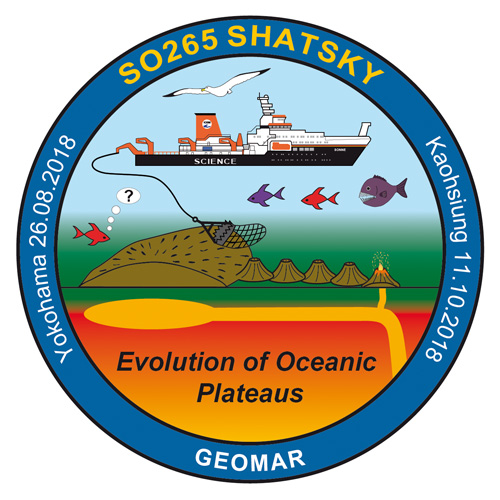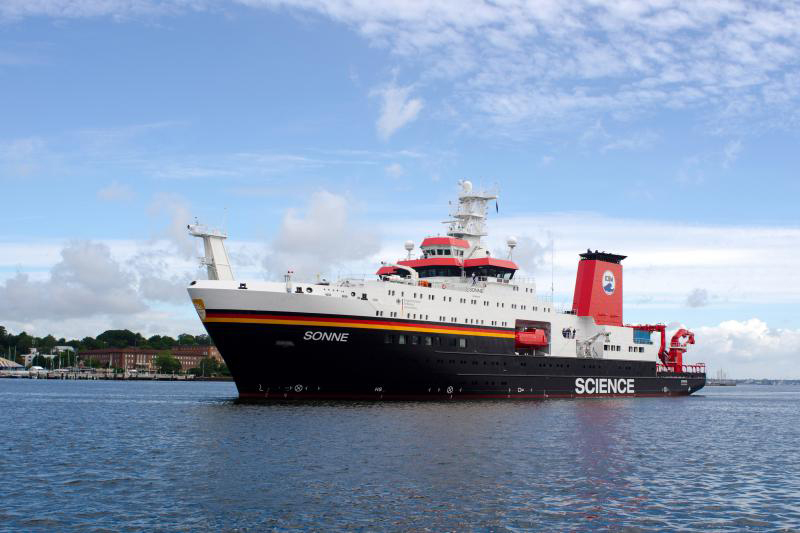SONNE SO265
- Area:
- Eastern Japan
- Time:
-
26.08.2018 - 11.10.2018
- Institution:
- GEOMAR
- Chief scientist:
- Jörg Geldmacher

The origin of large igneous plateaus in the world's ocean basins is a subject of ongoing debate. The R/V SONNE expedition SO265 focuses on the post-plateau volcanic evolution of Shatsky Rise (N-Pacific Ocean) to test if this spacious plateau transitions into one (or two?) age-progressive hotspot tracks (Papanin Ridge and/or Ojin Seamount Province) possibly continuing to the nearby Hess Rise plateau. Shatsky Rise was recently drilled during Integrated Ocean Drilling Program (IODP) Expedition 324. The drilling results are consistent with the hypothesis that Shatsky Rise formed by a mantle plume interacting with mid-ocean-ridges at a so-called triple junction, although the evidence for the involvement of a (deep) mantle plume is not unequivocal. Linking Shatsky Rise to an age-progressive hotspot track would provide the most-convincing evidence thus far that Shatsky Rise was formed by a mantle plume. The final stage of the plateau evolution, in particular its transition to a narrow hotspot track-like feature and the temporal and geochemical evolution of this track, however, were not addressed by the drilling expedition. The SO265 expedition will broaden the international research on Shatsky Rise by mapping and sampling the northern edge of the plateau, as well as the more than 500 km long Papanin Ridge and the Ojin Seamount province, both which could represent the beginning of a Shatsky hotspot track. 



